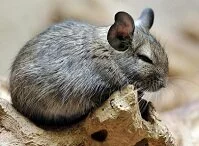The spring and fall (autumn) come between these two extremes from both a temperature and a precipitation standpoint. Generally speaking, these are also the most unpredictable seasons as temperatures can vary greatly from week to week and month to month.
Wildlife
As a fairly mountainous country the wildlife in Chile is limited. Most of the animals can handle the cold weather and snows, meaning many of the animals are mammals or birds as reptiles, fish, and other animals are not as common. Despite these limitations, the wildlife is fairly diverse as the country moves from semi-tropics to Antarctic weather, it has alpine peaks and sea level coastline, and in the north is the world's driest desert.

Albatross
Most of the animals native to Chile are mammals, both large and small. Among the largest of these animals are llamas and alpacas, which are both native to the Andes. The Vicuna (a camel species), deer, beers, boars, emus, cougars (puma), fox, tapir, monkeys, armadillos, and porcupines also live in the mountains. Among the smaller mammal species in the Chilean Andes are opossum, sloth, bats, rabbits, mice, squirrels, rats, and the chinchilla, a native rodent.
The sea life is very limited inland as most rivers move too quickly for much life and most of the lakes are alpine lakes, which also limits the life. Most of the sea animals live off the western coast in the Pacific Ocean. This ocean is home to large mammals such as whales, sea lions, and dolphins, but most of the life is fish or shell fish. Sea bass, loco, picorocosole, sole, cod, grouper, salmon, tuna, sharks, prawns, squid, and eels are present throughout much of the coast. Further north in the warmer waters snapper, mackerel, tuna, puffer fish, mahi-mahi, seahorses, starfish, sea urchins, crab, rays, and jellyfish can also be found.

Chinchilla
The long coastline and the high mountains also attract numerous birds, including many water fowls and predatory birds adapted to mountain life. One of the most famous of these birds is the penguin, which primarily lives in the south, but some species live along the entire coast. Egrets, pelicans, geese, albatross, seagulls, sandpipers, eagles, condors, Andean flamingos, partridges, coots, finches, hummingbirds, wrens, and owls are also common.
The reptilian, amphibian, and insect life in Chile are somewhat limited, but definitely present at lower elevations and in the northern desert. Many of these animals are spiders, including the tarantula, and snakes, including the rattlesnake. Few insects can survive at high elevations, however flies, mosquitos, butterflies, and other insects can be found at lower elevations.

Cougar (Puma)
When it comes to native plant life, South America is home to many famous edible plants and these plants quickly spread throughout Chile, South America, and beyond. The pineapple is from the region where Brazil and Uruguay meet while potatoes and tobacco originated in the Andes Mountains. A few others, including cacao trees (used to make chocolate), peanuts, and tomatoes are also from South America, although their actual origin is unknown. Peppers, both sweet and hot peppers are from Central America or northern South America while vanilla, avocado, papaya, and corn (maize) are likely from Central America itself. No matter each food's origin, what is known is that these foods spread throughout the continent and to the country of Chile with the help of pre-historic people, animals, and winds. These people have had these foods for nearly as long as people have inhabited the region and each makes an important part of the people's diet and culture now and for thousands of years into the past.
More than just these plants, Chile is home to thousands of trees, shrubs, grasses, and flowers. The larch tree is one of the world's longest living trees (it can live for 3,000 years), the myrtle or luma tree (commonly referred to as a cinnamon tree in Chile), pine trees, eucalyptus trees, and cypress trees also exist in Chile.